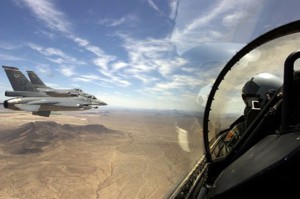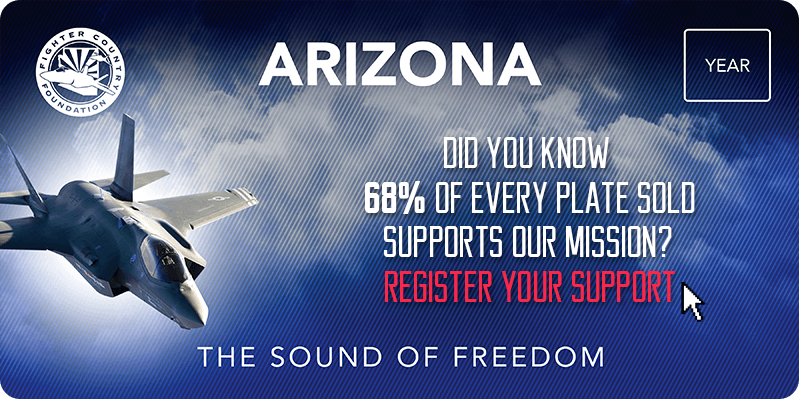 The US Air Force and Lockheed Martin are getting ready to demonstrate the first operational use of live virtual constructive (LVC) training technology on 26 April at Luke Air Force Base (AFB), Arizona.
The US Air Force and Lockheed Martin are getting ready to demonstrate the first operational use of live virtual constructive (LVC) training technology on 26 April at Luke Air Force Base (AFB), Arizona.
The technology has the potential to revolutionize the way air forces train-particularly for aviators who will fly 5th generation machines like Lockheed’s F-22 Raptor and F-35 Lightning II.
While currently USAF, US Navy and US Marine Corps pilots fly their aircraft against other friendly jets replicating enemy “bandits” such as the Russian Sukhoi Su-30 Flanker, often there are not enough adversaries for pilots to train against.
“There are not enough airborne resources that we can go fly and fight against that would give us the maximum training benefit for all the JP-8 [jet fuel] that we’re burning,” says Robert McCutchen, Lockheed’s F-16 training expert at the Luke AFB Networked Training Centre. “To be able to go out and fly a four-ship against two adversaries doesn’t really maximize your ability to employ that airplane as a four-ship.”
LVC would offer that four-ship of real F-16 fighters the ability to fight against eight to 12 virtual bandits. Those computer-generated adversaries would show up on the F-16’s sensors just like real enemy fighters and would have realistic flight characteristics, McCutchen says.
The adversaries would be managed by instructors who would control those virtual enemies and manage their tactics. They would also make sure the virtual adversaries do not get into visual range.
“We’ll have individuals on the ground who will be manipulating and managing the scenario and making sure these computer-generated little guys stay outside the visual range of the live fighters,” says the retired 5000+ hour F-16 weapons school graduate.
The addition of so many virtual enemy forces in the air and on the ground greatly increases the complexity of training missions.
“We’ll be able to robust their scenarios,” McCutchen says.
The limitation, of course, is that LVC cannot simulate a visual-range opponent. The targets are virtual, but it should still be a useful training tool.
This is especially true for the F-22, where Raptor units have a difficult time coaxing dissimilar fighter units to fly against them due to the lopsided nature of the training. The F-35, McCutchen says, will face similar problems of not having enough high-performance adversaries to train against.
“The F-35 is going to have the same problem and the LVC is going to be a way that the air force to going to move forward and make the technology mature through the F-16 so that we can help future F-35 pilots,” he says.
In February, Lt Gen Herbert “Hawk” Carlisle, the USAF’s deputy chief of staff for operations, plans and requirements said that it is almost impossible to build a realistic, challenging training scenario for the F-22 and F-35 during real-world exercises. There is no way to replicate the kinds of electronic warfare threats or the sheer scale of enemy opposition that those aircraft might face during a real war except – to certain extent – during some select large-force exercises like Red Flag at Nellis Air Force Base, Nevada.
“To do those routinely is a challenge,” Carlisle said. “So you have to do a lot of that by virtual constructive capability.”
Given that there would be more training value per LVC sortie, the USAF would also save money on fuel and airframe life.
But first, LVC technology will have to demonstrate its capabilities operationally before the USAF allows its fighter pilots to use it. Luke AFB’s F-16 squadrons will be the first to use LVC training if Air Education and Training Command gives the go-ahead.
“On the 26th [of April] we’ve got government folks from AETC down at Randolph [AFB, Texas] that are going to come visit,” McCutchen says. “We will do a demonstration with live virtual constructives.”
Once AETC gives its approval, the USAF will start the process of setting up training scenarios using the new technology. There is a lot of testing and integration work that remains to be done, McCutchen says. “We’re going to go through an evaluation period to figure out the smartest way to use this new equipment,” he says.
That will probably take up most of the year, but F-16 instructor pilots will probably start seeing some of the capabilities of the system during their continuation training sorties. But eventually, student pilots will start seeing hordes of virtual enemy fighters which they can slay to their heart’s content.
By DAVE MAJUMDAR WASHINGTON DC / Flight International








